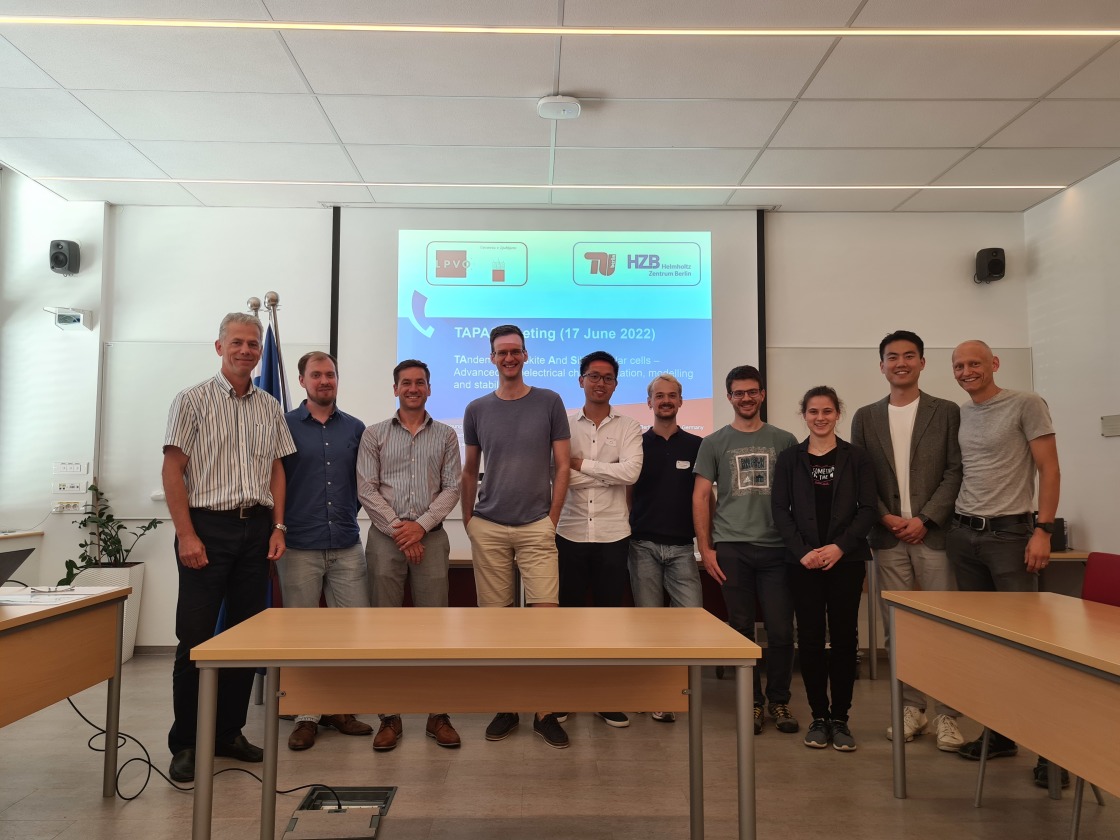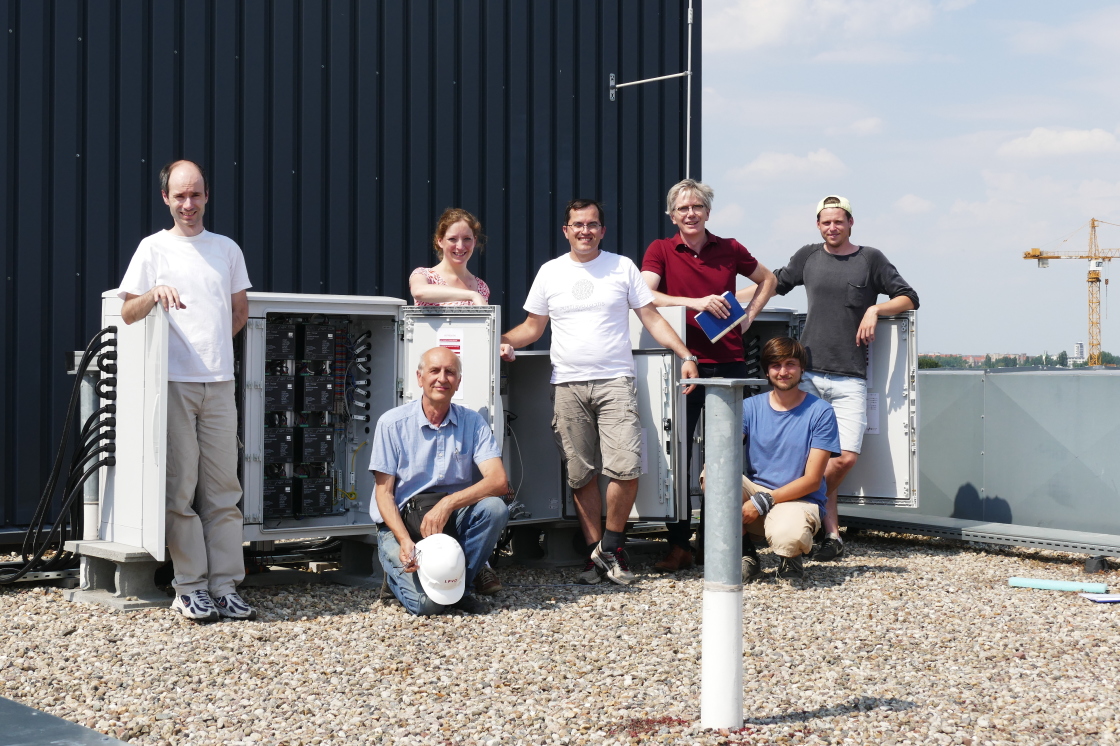Project TAPAS
The scientific gateway for tandem solar cell technology
The TAPAS project (TAndem Perovskite And Silicon solar cells - Advanced optoelectrical characterization, modeling and stability) is a collaboration between the Laboratory of Photovoltaics and Optoelectronics, University of Ljubljana (LPVO-UL) in Slovenia, the Helmholtz-Zentrum Berlin (HZB) and the Technische Universität Berlin (TUB or TU Berlin).

Members of TAPAS at the project meeting in June 2022. (Photo: HZB)
The main focus of this project is the further development and optimization of perovskite/silicon tandem solar cells in terms of power conversion efficiency (PCE) and general stability. For this, we need deeper understanding of this technology, which we can obtain by thorough characterization and modelling.
The rapid rise of the perovskite/silicon tandem technology was enabled by rapid advances in perovskite absorbers, the latest stars in PV research. Because of their excellent optoelectronical properties and of extensive research in this field, it was possible to improve the PCE of perovskite single-junction solar cells to the level of other PV technologies in only a few years time. Based on perovskite composition, we can tune their bandgap to values around 1.7 eV offers the possibility of making highly efficient tandem solar cell devices. As the tandem integration brings new challenges into fabrication and operation, projects such as TAPAS are necessary to speed up the path to market.
As a collaborative project, TAPAS promotes transfer of knowledge and of researchers between its partners. This facilitates obtaining state-of-the-art scientific results and gives young researchers invaluable experience for their academic career and life.

Installation of customized mpp-tracking systems manufactured by UL for lab scale solar cell samples in summer 2018 at Berlin rooftop lab. From left to right Boštjan Glaar, Joe Stepan, Carolin Ulbrich, Marko Jankovec, Rutger Schlatmann, Maximilian Riedel, Jan Grüner (Photo: HZB)
